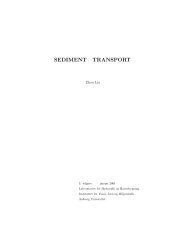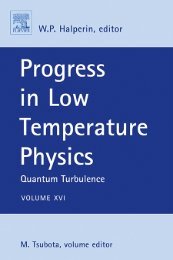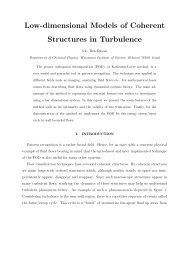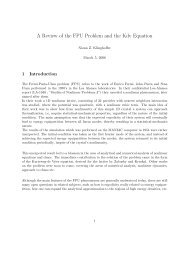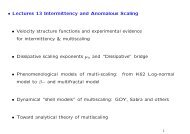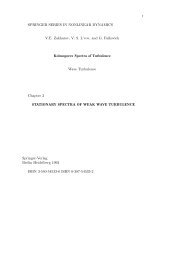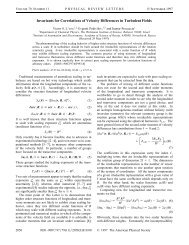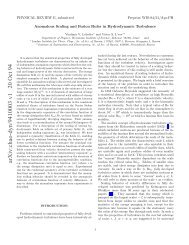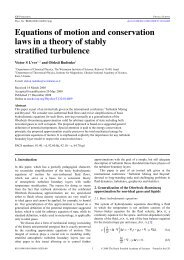Phys. Rev. A - Victor S. L'vov Home-page - Weizmann Institute of ...
Phys. Rev. A - Victor S. L'vov Home-page - Weizmann Institute of ...
Phys. Rev. A - Victor S. L'vov Home-page - Weizmann Institute of ...
You also want an ePaper? Increase the reach of your titles
YUMPU automatically turns print PDFs into web optimized ePapers that Google loves.
4768 VICTOR L'VOV AND GREGORY FALKOVICH 46<br />
-<br />
which h subset the eddy belongs to). Comparing T( k) and In conclusion, we would like to say that the range <strong>of</strong><br />
rir, we obtain the above locality criterion h < h,,, = 1. exponents evidently should be restricted from below. We<br />
The consideration <strong>of</strong> an ultraviolet interaction is a bit suppose that the high-order correlation functions behave<br />
more complicated. The interaction <strong>of</strong> the given k-eddy as if they are determined by the positive exponents only<br />
with small kl -eddies (with 7 l k >> k) should provide [3,4]. What we have shown here is that such a restriction<br />
some turbulent viscosity v,: should be given not by locality analysis but by the other<br />
rU,(k,kl,h )=[k2vT(kl,h )]-I .<br />
conditions ie.g., incompressibility [13]).<br />
The value <strong>of</strong> viscosity should depend on the turbulence APPENDIX: DIAGRAMMATIC APPROACH<br />
level at the place and the time under consideration. This TO THE ASYMPTOTIC BEHAVIOR<br />
means that the viscosity depends on the velocity <strong>of</strong> the OF THE HIGH-ORDER-VELOCITY-<br />
k-eddy which generates the small eddies. The rate <strong>of</strong> en- CORRELATION FUNCTIONS<br />
ergy dissipation<br />
1. The quasi-Lagrangian diagram technique<br />
be to the local<br />
gives the viscosity<br />
flux sik8u3(k7h). It<br />
Following [8,11], we use the quasi-Lagrangian (QL) velocity<br />
u(ro,r, t) (15) in order to eliminate the sweeping in<br />
the vicinity <strong>of</strong> some space point ro. In the (t,k) representation<br />
these equations reproduce the original Navier-<br />
Stokes equations (7) but with another vertex V [Eq. (1611,<br />
which was called dynamic [8].<br />
The detailed analysis <strong>of</strong> the Wyld diagram technique<br />
(DT) for quasi-Lagrangian velocities was given in [8,11].<br />
Such a diagram technique was formulated [8] in terms <strong>of</strong><br />
the double-velocity-correlation function for the QL velocand<br />
the following estimate for r,,:<br />
ities u( r,; k, o) (l7j and Green's function:<br />
Determining the ultraviolet locality, we obtain where f is an extraneous force. Let us introduce the<br />
r/r,,= (k, /k )'-"




